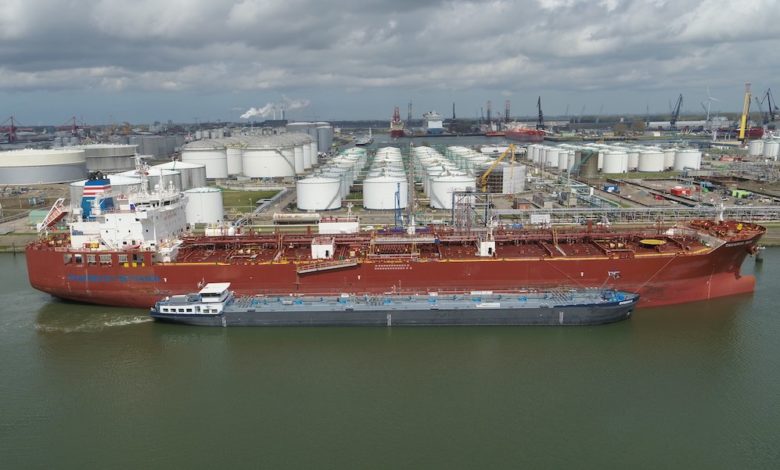Owners need solutions, not more carbon dogma

Chris Chatterton, chief operating officer at the Methanol Institute, on how shipowners want to spread their risks in choosing tomorrow’s fuel.
Shipping rightly welcomed the Biden administration’s signal of re-engagement with the IMO decarbonisation process. More recent comments by US climate envoy John Kerry – that 50% of the carbon emission reductions needed to get to net zero will come from technology not yet invented – echo loudly in shipping.
The solutions being most widely touted are unlikely to contribute much to the IMO’s initial 2030 emissions reductions target. Ammonia and Hydrogen will play a role in the long term – perhaps by 2050, but there the certainty ends.
The confusion the industry finds itself in reflects both the scale of the challenge and tools available to tackle it. Recent suggestions that shipowners don’t have to specify the fuel, just the emissions reduction goal are a neat soundbite reflecting an academic viewpoint which misunderstands an investor’s need for options – and soon.
Alternative fuels are evolving at different time intervals – first LNG, now Methanol, next Ammonia, then Hydrogen – and all will have some role to play.
It is vital that shipping’s policy-makers include all fuels in its regulatory process and there needs to be a transparent and equal playing field so that implications, costs and practicalities of each are understood.
Buyers need certainty – perhaps in the form of a fungible carbon price. A bunker fuel levy might look attractive or ‘simple’ enough as an R&D initiative, but it won’t be enough to raise the money required for the energy transition itself.
For evidence we can observe the price rises that followed January 2020 – what happens once carbon is priced in will be seismically different. Of course, shipowners need to understand targets but they also need incentives to pay higher prices and producers need to understand what will be economically viable.
The hype we see is not around the fuels that are available now, it is around fuels that are neither regulated nor commercially available yet. The Hydrogen economy is a long desired goal but one that is some years and billions, if not trillions, of dollars away.
Likewise, the issues around Ammonia will be overcome and it could provide the volume the industry needs; though none of today’s production is from renewable sources so carries a significant carbon footprint.
The reality is that there are two choices at scale as of now; LNG and Methanol. The only other alternative by 2030 is slow steaming. Both have challenges to overcome, LNG its broader GHG footprint, Methanol its carbon atom. Both can be produced renewably – in the case of Methanol this is already happening, increasingly as a biofuel with some e-fuel contribution too.
The rising use of Methanol to power Hydrogen fuel cells provides a third solution, one that is scaling quickly from auxiliary to main propulsive power.
Zero is a big number for any fuel or industrial process. Reality requires that we assess Methanol and other fuels on the basis of CO2 equivalent emissions across the total value chain and also consider fuel production and infrastructure, vessel storage, delivered prices and incentives.
These are the questions that will be foremost in operators’ minds. They need certainty of regulation, enforcement and benefit. The time to understand the interplay of these elements is short and running out.
Instead there is a disconnect between economic viability and the targets that owners will have to meet. The need is fuel that they can use now. It is unhelpful to remark that this will take ‘a few hundred billions’ of dollars dedicated to the fuel supply for shipping without providing any context of what that would mean in practice.
There is no single fuel solution; the requirement is a fuel that owners can start using today. Despite what plenty of big brains are saying about LNG, the evidence is that owners and charterers see it as transition fuel they can get behind and are confident they can manage the associated risks that come with adopting LNG.
Our discussions with shipowners suggest they are less interested in the dogma and more in taking action that spreads risk. Carbon is an inventory problem not a flow problem; if you can capture and reuse it as fuel the result is an overall reduction that displaces fossil fuel emissions and helps get us closer reducing the total.
The problem does not decrease with the latest data or findings; it moves when owners start to adopt solutions. And it could get more complex very quickly if IMO moves its policy position to a more relevant, 20-year global warming potential, from its current 80 years and adopts a lifecycle/well-to-wake approach to emissions.
Faced with that challenge, the risk is not that one fuel or another is favoured for whatever reason. The risk is that we don’t move fast enough to apply the solutions we already have.
